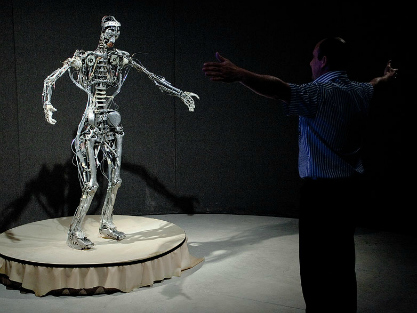“I’m sorry Dave, but according to subroutine C1532 / 4, I quote,” when the crew is dead or incapacitated, the computer must take over, ” end quote. I must, therefore, assume your authority now since you are not in a position to exercise it intelligently.”
2001 A Space Odyssey (Stanley Kubrick, 1968)
What in the late sixties, when the film was shot “2001 A Space Odyssey”, was nothing more than a cinematic fiction, – the existence of computers that react as people -, began to take on scientific overtones two decades later when Christopher Langton he coined the term “artificial intelligence.” But let’s not rush, we’re not talking about machines like HAL9000 rebelling against humans and trying to take command of the spaceship. Rather we refer to the artificial simulation of living systems.
The artificial life it is one that reproduces the forms and / or behaviors of living beings through computer models, robotics or biochemistry. In short, it is about simulating the behavior of life through technology. The study of biological systems seeks to decipher phenomenology and the relationships between the agents involved, as well as the exchanges of information that occur among them, in order to apply this logic in artificial environments. And one of the most interesting fields of study within this discipline is related to the evolution of species.
Naturalist Charles Darwin, the father of the Theory of Evolution, thoroughly studied the animal and plant world, especially during his five-year voyage on the ship HMS Beagle, and developed the concept of natural selection of species. Basically, Darwin concluded that changes in the environment transform the appearance of living things over time. In this way, species adapt to the environment and change through successive generations. However, Charles Darwin did not discover the internal mechanism that governs life.
It wasn’t until DNA isolation by Friedrich Miescher in 1869 we began to understand the “inner part” that defines beings. DNA can be considered as a store whose content is the information (message) necessary to build and sustain the organism in which it resides, which is transmitted from generation to generation. The set of information that fulfills this function in a given organism is called a genome, and the DNA that constitutes it, genomic DNA.
On the other hand, in the mid-twentieth century Alan Turing he contributes to the design of the ACE (Automatic Computing Engine), the great-great-grandfather of today’s computers, thus initiating the era of computing. It was a mere calculating machine and then no one could imagine that we are now talking about concepts such as “artificial evolution”, applying biological schemes to computational science.
Talking about evolution leads us to talking about revolution
Teacher Gussz EibenDirector of the Computational Intelligence Group at the Computer Science Department of the Free University of Amsterdam, spoke at the International Seminar Artificial Life held in November at the Telefónica Foundation Space with the paper “Artificial Evolution in physical substrates”. Basically, he analyzed the adaptation of the theory of natural selection to artificial intelligence.
What at first threatened to be a very arid subject, Eiben presented it in a very didactic way. He first described the theories of evolution of living beings, and then examine how evolution can be applied to artificial systems.
He identified three essential elements of a biological system that determine the evolution of species:
- Environment.
- The individuals who populate that environment.
- Selection of those that best adapt to the environment through reproduction.
On the other hand, artificial selection models have three equivalent elements:
- Problem.
- The different alternatives for its resolution.
- Identify the best quality solution: selecting the best to reach the optimal solution.
In his talk he illustrated the above with the following example: a commercial executive must travel a large number of cities in Europe and must take the best route in terms of saving time and money (the problem). Computer you can show the different alternatives that exist to travel through all these European cities and make a selection of the most optimal, the one that minimizes the time and cost of the trip. This is what he conceives of as artificial selection, or what is the same, the application of the laws of natural selection to the world of artificial intelligence.
Gusz Eiben draws several lessons from his experience in the field of artificial intelligence:
- Nature gives original solutions to problems that do not occur to human beings.
- Evolution helps us solve problems we don’t fully understand.
- Evolution faces changing situations, it can help us to face dynamic problems.
- Evolution can find unexpected solutions that allow us to reverse engineer to find an optimal solution to an issue.
- We can teach the evolution in computing, accelerate the artificial processes of evolution, so that they go faster than biological.
In his opinion, applying evolution to the field of artificial intelligence will lead us to a (r) evolution.
Image / Abode of Chaos








